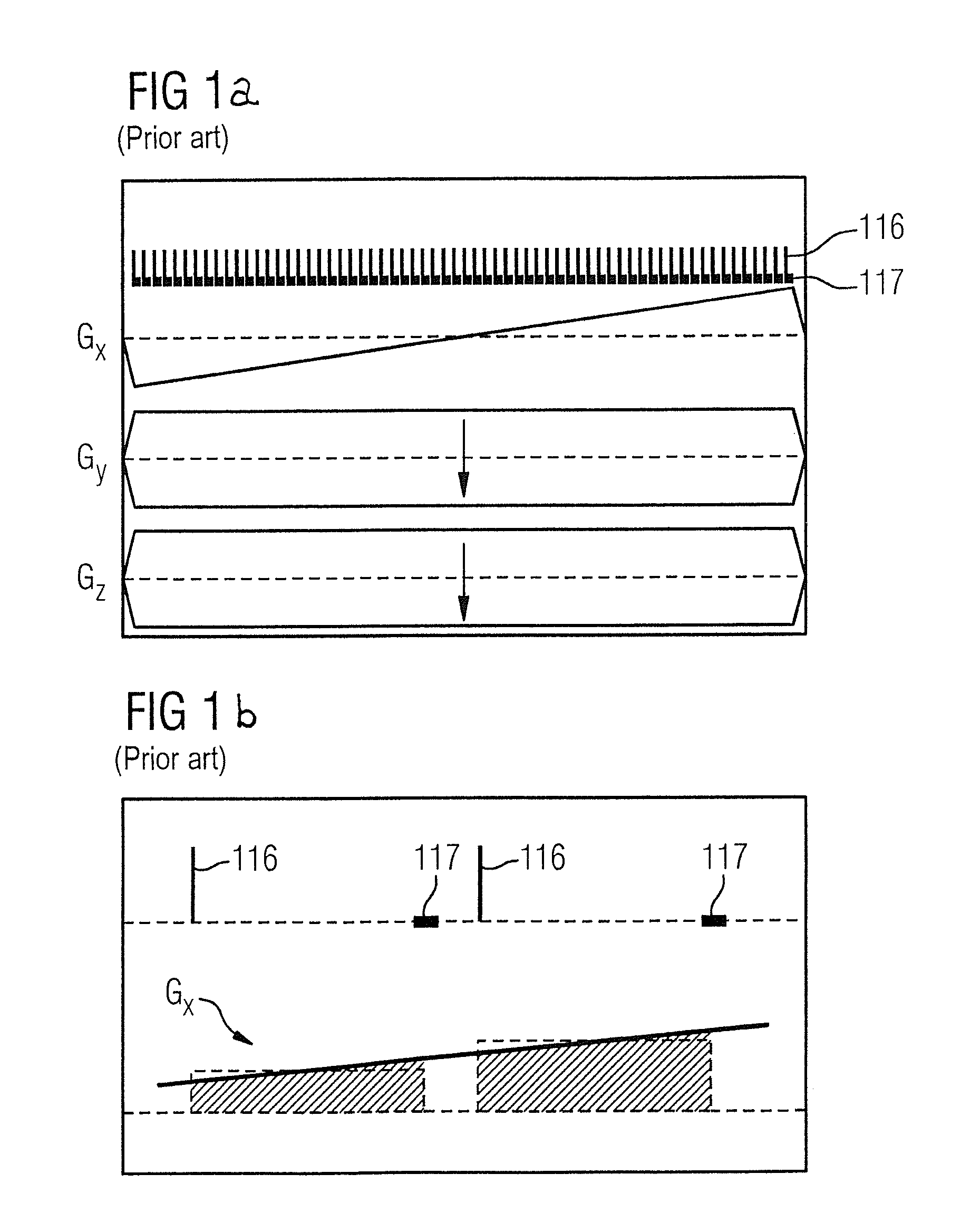Method to generate magnetic resonance measurement data with image contrast selected and produced by preparation pulses
a technology of image contrast and measurement data, which is applied in the direction of magnetic variable regulation, reradiation, sensors, etc., can solve the problem that no longer necessarily ensures the achievement of desired contrast, and achieve the effect of reducing the total measurement time to scan the k-space corresponding to the examination region, reducing the specific absorption rate, and reducing the exposure to the examination subj
- Summary
- Abstract
- Description
- Claims
- Application Information
AI Technical Summary
Benefits of technology
Problems solved by technology
Method used
Image
Examples
Embodiment Construction
[0025]A sequence to acquire a line in k-space is shown in FIG. 1a, according to the known RASP method. It is apparent that the two phase coding gradients Gy and Gz are activated with a constant strength while the strength of the third phase coding gradient Gx increases continuously. For simplicity, no peripheral pulses 115 are drawn in this view.
[0026]The acquisition of two raw data points in RASP is presented in detail in FIG. 1b. It is apparent that the echo time—i.e. the time interval from the RF excitation pulse 116 up to the beginning of the readout time period 117—is constant. Moreover, the phase coding gradient Gx runs in stages from the bottom upward. The phase coding gradient Gx to read out a raw data point is thereby kept constant, which means that the phase coding gradient Gx is kept constant for the time period TE (echo time). A preparation pulse 115 can be radiated every N RF excitation pulses 116, for example before the respective RF excitation pulse or also in combina...
PUM
 Login to View More
Login to View More Abstract
Description
Claims
Application Information
 Login to View More
Login to View More - R&D
- Intellectual Property
- Life Sciences
- Materials
- Tech Scout
- Unparalleled Data Quality
- Higher Quality Content
- 60% Fewer Hallucinations
Browse by: Latest US Patents, China's latest patents, Technical Efficacy Thesaurus, Application Domain, Technology Topic, Popular Technical Reports.
© 2025 PatSnap. All rights reserved.Legal|Privacy policy|Modern Slavery Act Transparency Statement|Sitemap|About US| Contact US: help@patsnap.com



